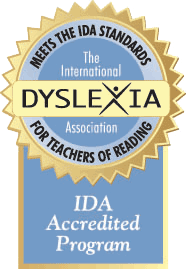Differentiated Instruction
Posted by Brainspring on 22nd May 2019
Differentiation involves valuing students as diverse learners and providing them with tools and opportunities suited to them. Think of differentiating instruction like exercise and fitness. Not every type of exercise is suitable for every person, although all people do need some form of it. Running is excellent for some, but far too impactful and strenuous for others. Some people enjoy hot yoga, cycling, kayaking, while others prefer walking, weight-lifting or swimming. Differentiated instruction works in a similar way: not every student learns the same or has the same abilities, but they all need to learn the content. Differentiating instruction is all about planning and packing your teaching toolbox appropriately so you have options and can pick the proper tool for each student.
Suggestions on How To Differentiate Instruction
In order to know how to differentiate instruction, you need to know your students (their abilities, how they learn, their personalities) and the content. Data from formal and informal assessments should provide information on student skills and abilities, as well as what they need to improve and focus on. Experience and getting to know your students will give you the rest of the information you need. Look for patterns in your students learning needs and styles; then plan for how you will address those differences for the specific content you’re teaching or the task you’re assigning. This is how differentiated instruction can be used with every strategy.

After giving assessments, determine your small groups. You may have a few students that are ready for above grade level material. Some may be right where they need to be and at grade level, while others may be far behind. Maybe a couple are years behind and simply need to work in an even smaller group to get where they need to be.
Get together your schedule for the school year. If, for example, you have a 90-minute block of time for reading, how much time does this give you for whole and small group instruction? Do you only teach in small groups? Have your progression by your side and determine what material must be covered this school year. You may be able to introduce material whole group, then break into small groups to get your students where they need to be. Everyone is going to either get where they need to be or closer to where they need to be. Remember this!
Do the Math
In the above example, we have a 90-minute reading block every day with three small groups. This would give you as the teacher 15 minutes for whole group instruction. Then, you would have 25 minutes for each small group per day. This is a rough estimate, and of course, can be changed to better meet your classroom needs.
When we work with students in small groups, we can better meet them where they are. This is an opportunity to either speed up, slow down, or review at the same pace. While working in small groups, also consider the types of learners you are meeting with. This is key. Everyone will certainly benefit from multisensory instruction that is engaging and hands on!
Be Creative, Yet Effective
Basically, use your time wisely. Getting crafty and cute is GREAT and fun, however, sometimes we have a little too much fun and stray from the purpose of the lesson. Understand what you want your students to gain from the lesson, and make sure your instruction clearly helps to make that happen in the amount of time you have allotted for each group.
What is the Rest of the Class Doing?
Again, use your time wisely! Put a list on the board of what your student’s priorities are. Maybe even allow them a freebie when they have completed their list :).
For example …
- Wrap up step 2 of your research project.
- Complete page 234 in your math book.
- Look up _____ for _____ assignment with a partner.
- Read independently and write a mini summary of what you read.
- Journal write on how you feel you are going to do on the science test next week.
- Study for the science test with a partner.
- Freebie – if all is done, grab yourself a snack and doodle what you did last weekend!
Learning, as we know, is not a one size fits all. Planning ahead and working with your team at school can help significantly. Once a schedule is put in place, and routines are taught to students, the possibilities are endless. Informing parents of your classroom procedures is also a sure way to help keep everyone on the same page.
Enjoy!
Written by Brainspring
Learn more about Brainspring’s accredited Orton-Gillingham professional development
Learn more about Brainspring’s Michigan-based Learning Centers
Accreditation:



